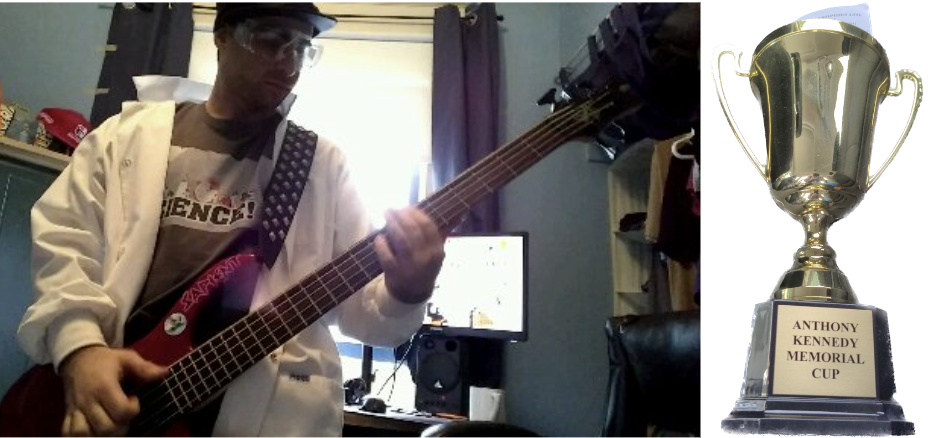She’s Lost Control: Amygdala Hijack
By Music Heals December 9, 2013

Monday, Dec 9, 2013
Written by Diana C. Hereld
Diana C. Hereld is the founder of Pathways In Music, an up-and-coming nonprofit organization and blog dedicated to the cultivation of music psychology and neuroscience research. Although her current specialization is autism and music, her postgraduate research interest is particularly in the way varied personality types respond emotionally to music, and the implications in using these responses as tools for behavioral interventions and psychological resilience. Diana has written for An und für sich, Hypebot, Music Think Tank, and Sidewinder.fm. We are so pleased to share Diana’s work and hope that this article in particular will inspire you to dig deeper into exploring music choices for your clients and more! For more information on Diana, check out her site: www.pathwaysinmusic.com.
_________________________________________
She’s Lost Control
In considering the why, and now the how of better implementing tools made available in music psychology, I am consistently struck by how very complex our musical preferences and responses are as humans.While avoiding the attempt to craft any groundbreaking expository theories, I’d like to visit a motivation of mine in the field whilst bringing attention to an old Joy Division favorite. First, I will disaggregate the various schools of thought that overlap in this field of music psychology. What do the following have in common?
1. Existential and phenomenological psychology
2. Jungian personality dichotomies
3. Psychological resilience
4. Malabou’s concept of neuroplasticity
5. Psychoanalysis
6. Advances in the neurological study of fear
7. Critical understandings of cultural and societal treatments of emotion
8. Music
In addition to composing the framework of my greatest motivators toward an existential understanding of life, I’d posit that not only do they contribute to the eventual pragmatic method I seek to establish in a clinical therapeutic setting, they are necessary in totality. The more I engage a dialogue regarding the concept as a whole, the more I am struck by just how much need be taken into consideration as well as shedding some light into my peculiar distaste for ‘music therapy’ as a solitary solution. Though music therapy practices have occasionally been proven effective for various wellness processes in young children as well as adults, I remain skeptical. I would argue that one need explore deeper into the psyche, history and personality of the patient. Far too often we see music therapy studies carried out on young adults in particular that prove completely blanketed – with the total exclusion of considerations such as gender, individual neuronal histories and variance in personality.
To come quickly to the point, I recently posed a vital question: In the occurrence of a (negative) amygdala “takeover”, what is the immediate goal? Is it to utilize music to objectify the patient’s feelings, or to quickly placate and soothe the individual’s distress (particularly if the patient suffers a history of auto-destructive behavior)? My response to the above is both, but objectively more as well. Here are a few thoughts to consider which barely skim the surface in composing the process of discerning what type of method and music should be used:
- History of Mental Illness (i.e. What are the immediate concerns? Has the patient demonstrated a capability or propensity for harm to self or others?)
- Medical and Psychiatric History (Has there been any type of surgery or modification in brain chemistry or anatomy?)
- Socioeconomic Background (What types of music to which the patient been exposed as a part of their ‘nurture’ upbringing, and the extent of music appreciation in their cultural worldview?)
- Religious/Familial/Educational background (i.e. unconscious and conscious conditioning-in what context has the patient learned or been taught to treat music? Is it a daily ritual, mainly a social luxury, rite of a religious tradition, utilized in education, etc.)
- Personality (What characteristics of extroverted or introverted personality types are being displayed?)
- Musical Preferences and Affect Regulation (How and to what extent are they affected by repetition, unfamiliar versus familiar rhythms and meters, Eastern/Western depictions of consonance and dissonance, ‘major’ versus ‘minor’ tonalities, etc.)
- Musical Propensity and Skill in Practice or Performance
- Existential values and spiritual/moral motivations of the patient
On the tip of the iceberg of gaining a general understanding of the patient, we see already that the answer lies beyond sitting down with a troubled teenage male, playing a bit of Mendelssohn and assuming to illicit the disclosure of an exhaustive account for discord with his father. Establishing a rapport and fluency over the course of time, making the effort to implement music he responds to, and eventually gain an empathetic understanding of how to meet him on his level, however, is something I’m interested in.
I’d like to now return for a moment to the ultimate motivator and the necessity for this type of process. When I speak of the amygdala hijack, I am referring to the very instance in which the fight or flight response occurs. Although the ‘limbic system’ was long perceived to be an emotional center of the brain, the amygdala has been found to be the main ‘limbic’ area involved clearly implicated in the processing of threats. A ‘hijack’ occurs when our brain responds to threats; devoid of reasonable consideration or logic. Typically, when we are presented a stimulus, three events occur: we sense (visual, aural, olfactory, touch, etc.), we process, and we react. These occur in rapid succession. At the moment the threat is processed, the amygdala can override the neo-cortex, a center of higher thinking which deals with sensory perception and motor commands, and initiate an impulsive response (which holds the potential of negatively producing instances of destructive behavior and emotional irrationality). Because it is easier for the amygdala to control the neo-cortex by arousing various brain areas than it is for the neo-cortex to control the amygdala, the ability to shut down anxiety-producing hormones and emotions is no simple feat and proves an exquisite challenge in undertakings of crafting a therapy.
One theory (enter elements of LeDoux, Goleman and Damasio) is that if we can slow or somehow manipulate this hijack process, we may buy ourselves the time it takes to properly process the stimulus, and respond in an appropriate, healthy fashion. LeDoux was hopeful about the possibility of learning to control the amygdala’s impulsive role in emotional outbursts: “Once your emotional system learns something, it seems you never let it go. What therapy does is teach you how to control it – it teaches your neocortex how to inhibit your amygdala. The propensity to act is suppressed, while your basic emotion about it remains in a subdued form.” My theory? We can do it with music.
In closing, I’d like to briefly provide an example of my conviction that the above considerations are essential for a beneficial psychologist/patient relationship. It would seem safe to assume that were we to randomly sample a group of 1,000 healthy, typically functioning women age 18-30, and narrow from there the women who have an extensive knowledge and listening history of the English ‘post-punk’ band Joy Division, we would be presented with an entire spectrum of emotional affect regarding participant’s specific and individual musical associations. Obviously, this study is strictly hypothetical primarily in that were we to stop there, the comorbidity and variables would be obscene. My point is, it is almost guaranteed that there will be few in this clinical group who associate exclusively a strictly negative or strictly positive sentiment, and valence and arousal reaction to any one specific selected musical styling of Joy Division. Human experiences, associations and implicit reactions are unique, thus requiring a highly individualized method of interplay. I leave you now with a narrative appropriate to the study itself, with the hope of one day creating a methodical approach designed to alleviate the anxious and distressed of this very sentiment.
Click on link below to hear Joy Division’s “She Lost Control”:
http://www.youtube.com/watch?v=ZGMDBppWBOo
Written by Diana C. Hereld
For more information on Diana, check out her site: www.pathwaysinmusic.com.
Disclaimer: This post is used with permission from the author and does not necessarily represent the views of Music Heals Canada. All content provided on this blog is for informational purposes only. Music Heals Canada makes no representations as to the accuracy or completeness of any information on this site or found by following any link on this site. The owner will not be liable for any errors or omissions in this information nor for any losses, injuries, or damages from the display or use of this information. These terms and conditions of use are subject to change at anytime and without notice.
Are you a music therapist, music therapy intern, or a professional in a field related to Music Therapy that has something to share on the Music Heals blog?
Submissions should include to links to your website and any social media channels you would like included in the article.
Submissions may be edited for length and photos for publication will require a waiver, which will be provided.Submissions should be sent to Alexina Davis: blog@musicheals.ca
Share this article on social media:





